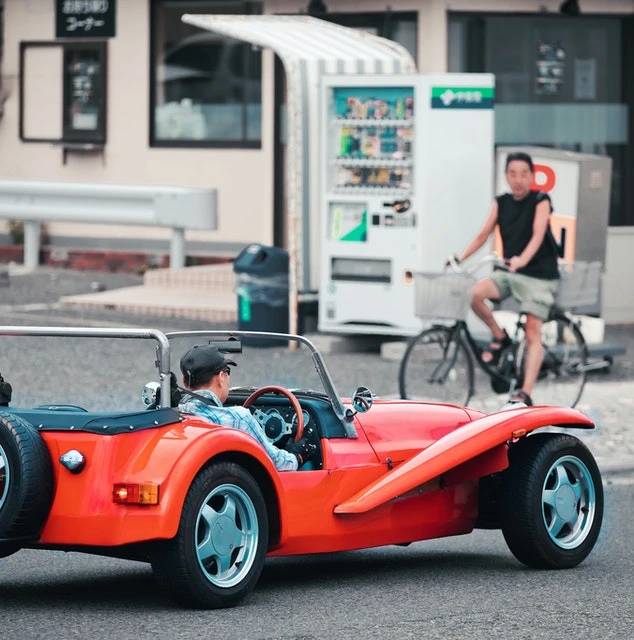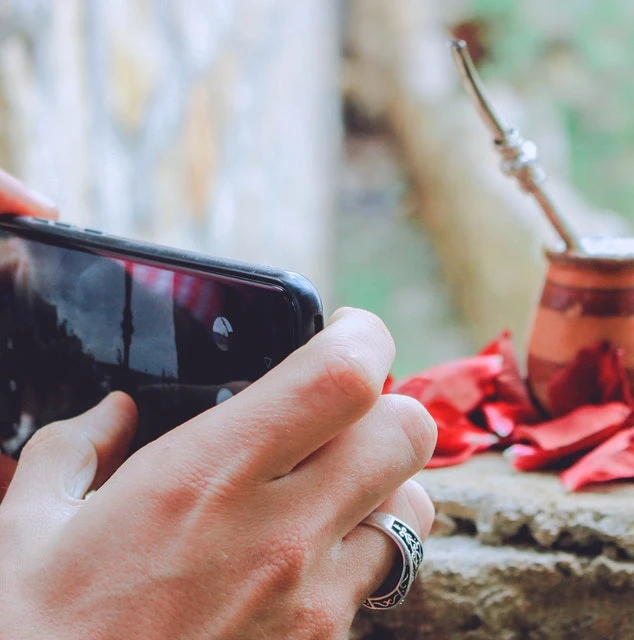Spring is the season of renewal, making it the perfect backdrop for new beginnings, such as saying “I do” at an outside spring wedding. With vibrant blooms, temperate weather, and a sense of magic in the air, an outdoor wedding during this season offers countless possibilities for creativity and charm. To ensure your celebration goes off without a hitch, we’ve compiled ten expert tips to help you create the perfect outside spring wedding.
1. Why Choose an Outdoor Spring Wedding?
A. Embracing Nature’s Beauty
Spring weddings capitalize on nature’s spectacular show of color and life. Seasonal spring flowers like tulips, daffodils, and cherry blossoms create a dreamy ambiance that no artificial décor could replicate.
B. Ideal Weather Conditions
Spring’s mild temperatures strike a balance between the chill of winter and the heat of summer, making it the perfect time for an outdoor ceremony. With proper planning, you can enjoy sunny skies without overwhelming heat.
C. Seasonal Floral Options
One of the biggest draws of a spring wedding is the wide range of seasonal blooms. From fragrant lilacs to romantic peonies, the season offers endless opportunities to incorporate fresh, lush arrangements.
D. Photogenic Venues
An outside spring wedding provides a natural setting for stunning photos. Whether at a scenic country club wedding or a quaint garden, the abundance of light and greenery creates breathtaking backdrops.
E. Trend-setting Potential
Outdoor weddings in spring allow couples to embrace trends such as whimsical flower arches, organic décor, or pastel color palettes that are perfectly suited to the season.
2. How to Select the Right Venue?

A. Evaluating Outdoor Spaces
Choosing the perfect event venue sets the tone for your outside spring wedding. Start by assessing the space’s natural beauty and how it aligns with your vision. Does it offer lush greenery, vibrant flowers, or scenic views? A well-maintained venue will make decoration easier and enhance the overall aesthetic. Country clubs, vineyards, or private gardens are popular choices for their elegance and built-in charm.
B. Accessibility for Guests
Your guests’ comfort is paramount. Make sure the venue has easy access for all, especially for elderly guests or those with mobility needs. Provide clear instructions and signage, particularly if the venue is remote. Parking availability is another crucial factor to ensure seamless arrivals and departures.
C. Assessing Weather Backup Plans
Spring weather can be unpredictable, so it’s vital to prepare for any eventuality. Check if the venue offers indoor spaces or the option to set up tents. A well-designed plan B doesn’t detract from the event but ensures your wedding proceeds smoothly despite unexpected rain or winds.
D. Venue Amenities and Services
Many venues come with useful perks, such as onsite catering, lighting, and event coordination services. Look for partnerships with local vendors for necessities like portable restroom rentals or backup power sources. These conveniences can save you time and stress.
E. Permits and Regulations
If you’re considering hosting your wedding in a public space, such as a park or beach, research any required permits or restrictions. Some venues may also have noise ordinances or curfews, which could impact your plans. Be sure to secure all documentation well in advance.
Finally, when booking, inquire about landscaping services or seasonal enhancements offered by the venue. A well-manicured lawn or freshly planted flowers can elevate your ceremony space, making it picture-perfect.
3. What is the Best Time of Day for a Spring Wedding?
A. Morning Ceremony Benefits
Morning weddings offer unique advantages, especially when paired with an outdoor venue. The cool morning air and soft sunlight create an intimate, peaceful atmosphere, which can be perfect for couples seeking a more serene, low-key event. Morning ceremonies often feel less rushed, allowing for more meaningful moments and conversations with guests. Additionally, hosting a morning wedding means your guests have the rest of the day free, making it easier for those who may need to travel. It also gives you the chance to have a relaxed brunch-style reception with lighter fare like pastries, fruit, and mimosas, which complements the spring vibe beautifully.
B. Midday Wedding Pros and Cons
A midday wedding benefits from the full daylight, which makes it easier to capture those gorgeous, sunlit wedding photos. The energy tends to be lively and bright, perfect for couples who want a more energetic celebration. However, midday can also bring the heat of the day, especially in warmer climates, so consider providing ample shade for guests or having fans available to keep everyone cool. Another consideration is that the sun can be harsher for photography, so you may need to schedule some breaks or have a designated area with shade for portraits. For catering, midday weddings also give you the flexibility to offer a traditional lunch or brunch buffet, which is a great way to showcase springtime flavors.
C. Late Afternoon Perks
Late afternoon weddings, often referred to as “golden hour” weddings, are a favorite for couples who want the best lighting for their photos. The soft, warm light of the late afternoon creates an ethereal glow, perfect for creating a romantic and dreamy atmosphere. A late afternoon wedding also allows for a gradual transition into evening, making it ideal for couples who want to enjoy both daylight and a more intimate evening reception. The temperature is generally more comfortable than midday, and you can incorporate candles, string lights, or lanterns into the décor as the sun sets, adding a magical ambiance to the venue. The timing also allows guests to relax and enjoy a longer celebration, perfect for outdoor cocktail hours or garden parties.
D. Evening Wedding Considerations
Weddings in the evening in spring can offer a sophisticated, intimate ambiance, especially in a setting surrounded by nature. Evening temperatures can be cooler, providing relief from the daytime heat and making for a more comfortable experience for your guests. An evening ceremony also allows you to make the most of mood lighting—think chandeliers, fairy lights, or even romantic restaurants-style setup. Evening weddings often lend themselves to a more formal tone, so it’s a great choice for couples who want to add elegance and luxury to their event. However, it’s important to consider that the later timing may require additional planning for transportation, as some guests may need to arrange rides home if they are coming from out of town or a long distance.
E. Matching Time with Desired Atmosphere
The best time for your wedding really depends on the atmosphere you wish to create. If you want a quiet, intimate vibe, a morning wedding might suit you best, while an afternoon or evening event offers the chance for a lively celebration as the day transitions into night. When choosing the time, consider how it aligns with the venue’s capabilities and how the light will change throughout the day. If you love the idea of a springtime sunset in your wedding photos, a late afternoon or evening ceremony will give you the opportunity to capture that moment perfectly. Regardless of the time, spring weddings offer a wonderful natural setting that enhances whatever atmosphere you wish to create.
4. How to Decorate for an Outdoor Spring Wedding?

A. Using Natural Elements
Accentuate the natural beauty of your venue with simple additions like wooden arches, draped fabrics, and organic centerpieces.
B. Selecting a Color Palette
Soft pastels, like lavender, blush, and mint, reflect the vibrancy of spring while maintaining an elegant tone.
C. Floral Arrangements
Lean into spring flowers for your décor, from table settings to ceremonial arches. Floral chandeliers and petal-strewn aisles add sophistication.
D. Lighting and Ambiance
String lights, candles, and lanterns enhance evening events, while sunlight can illuminate daytime ceremonies.
E. Eco-Friendly Decoration Ideas
Reduce waste by choosing reusable party supplies like linen napkins, glassware, and biodegradable confetti.
5. What Are the Best Tips for Spring Wedding Attire?
A. Choosing Lightweight Fabrics
Select breathable materials like chiffon, tulle, or lace for both the bride and bridal party. Since the air in spring can often be dry, consider investing in chemical peel prior to the big day.
B. Weather-Appropriate Options
Layered outfits help prepare for fluctuating spring temperatures. A chic wrap or shawl complements formalwear without detracting from its elegance.
C. Accessory Tips for Spring
Incorporate seasonal accessories, like floral crowns or pastel-colored ties, for a cohesive spring look.
D. Footwear Considerations
Outdoor weddings call for practicality. Opt for wedges, flats, or heel protectors to avoid sinking into grass.
E. Coordinating Bridal Party Looks
Coordinate bridesmaids and groomsmen with pastel hues and floral accents, blending seamlessly with your theme.
6. How to Plan a Spring Wedding Menu?

A. Emphasizing Seasonal Foods
Celebrate spring with fresh, in-season produce like asparagus, strawberries, and peas.
B. Light and Refreshing Dishes
For an outdoor reception, consider dishes that feel light yet satisfying. Options like lemon-herb chicken or grilled fish pair well with spring’s vibe.
C. Beverage Pairing Ideas
Offer refreshing cocktails like mint mojitos or elderflower spritzers to complement the season.
D. Catering to Dietary Restrictions
A diverse menu with vegetarian, gluten-free, or vegan options ensures every guest is accommodated.
E. Sweet Endings: Desserts
Treat your guests to seasonal desserts like strawberry shortcake or lemon tarts. For heartier fare, a prime rib carving station can impress.
7. How to Choose Suitable Entertainment?
A. Live Music vs. DJ
Both live bands and DJs have their advantages. Choose based on the mood and energy level you want to create.
B. Outdoor Sound Setup
Invest in high-quality sound equipment designed for outdoor use to ensure speeches and music are heard clearly.
C. Engagement-Driven Activities
Add interactive elements like photo booths or lawn games to entertain your guests.
D. Children-Friendly Amusements
If children are attending, consider setting up a kids’ corner with games, crafts, or supervision.
E. Incorporating Cultural Traditions
Incorporate cultural or personal traditions into your entertainment, like a dance performance or unique ceremony elements.
8. How to Handle Weather Contingencies?
A. Monitoring Weather Forecasts
Track the forecast leading up to the wedding day and be prepared to adjust plans as needed.
B. Plan B: Indoor Alternatives
Scout indoor spaces or rent a tent to ensure the celebration continues even if the weather takes an unexpected turn.
C. Tents and Shelters
High-quality tents provide elegance and functionality, shielding guests from rain or sun.
D. Communicating with Guests
Keep your guests informed of any changes to the schedule or location via email or wedding websites.
E. Insurance Considerations
Wedding insurance can help cover costs associated with weather-related changes or cancellations.
9. What Are Some Guest Comfort and Safety Tips?

A. Providing Comfort Stations
Portable restroom rentals are a must for outdoor venues lacking sufficient facilities. Ensure they are clean and well-stocked.
B. Weather-Appropriate Seating
Provide cushioned chairs or blankets for guests who may feel chilly during the ceremony.
C. Navigational Signage
Clear signs help guests find key areas like parking, the ceremony space, and restrooms.
D. Safety Precautions and Measures
Ensure walkways are well-lit and free of hazards to keep your guests safe.
E. Accessible Facilities
Offer accommodations like ramps, wheelchair-accessible restrooms, and shaded seating areas to cater to all guests.
10. How to Capture Lasting Memories?
A. Hiring Professional Photographers
Invest in skilled photographers who specialize in outdoor settings to capture the best angles and lighting.
B. Video and Live Streaming Options
Hire a videographer or set up a live stream for guests who cannot attend in person.
C. Social Media Sharing Tips
Encourage guests to use a wedding hashtag to share their photos and experiences online.
D. Creating a Memorable Guestbook
Offer creative guestbook options like a polaroid station or a thumbprint tree to involve guests in documenting your day.
E. Documenting with Drones
Drone footage adds a cinematic touch, showcasing the full scope of your outdoor venue.
Planning an outside spring wedding requires careful attention to detail, but the result is a celebration as breathtaking as the season itself. By considering these tips, you can create a memorable event filled with love, beauty, and charm. Whether it’s choosing the perfect wedding ring or finding the right landscaping services to enhance your venue, each element contributes to an unforgettable day. Let nature inspire your big day and enjoy every moment of this new chapter.







